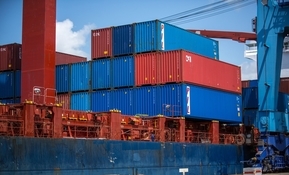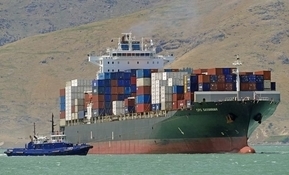How Container Technology Fixed Registration
Students registering for classes on Banner Self-Service the week of November 5th noticed that the experience was different from previous semesters. W&M IT staff saw it too. “We did not receive any calls or emails this year related to problems with Banner during registration,” says Technology Support Specialist Rodney Franks. “In fact, we received multiple positive comments and emails regarding the smooth registration process this year. The common message was that registration was easier than previous semesters due to improved Banner stability.”
After the first week of registration went smoothly, W&M IT staff knew their experiment had succeeded. They had successfully used container technology to fix registration.

What is Container Technology?
Just as the shipping industry can package many items into a standard shipping container for more efficient loading and transport, computer applications can likewise be containerized. Containers save resources by allowing computer applications to run off a shared operating system, making the duplication and sharing of applications more efficient as well.
As a result, containerized applications become much more lightweight and flexible, can be stopped and restarted in seconds, and require thousands of times less storage. Previous technology called virtual machines took minutes to restart and used much more server space because they each required individual operating systems.
Registration with Banner Self-Service has always been a problem of resource allocation at William & Mary. The amount of server space required to handle the short spike in registration traffic far exceeds what is typically needed for the rest of the year. “With containers, we can scale resources as needed,” says Manager of Core Technologies Jason Pully, who manages the Banner architecture at William & Mary. The flexible nature of container technology allows W&M IT to increase the number of servers needed to handle registration traffic and then return to normal afterwards.
Just prior to this registration period, the number of servers running Banner applications were doubled from two to four. W&M IT staff were cautious because Banner Self-Service had only recently been containerized following changes made to its delivery method by parent company Ellucian. As expected, Banner traffic was balanced between all four servers and no crashes were reported during the first week of registration.
William & Mary’s Early Adoption of Containers
 Container technology has been around for about a decade but has recently been made more accessible through development of tools such as Docker and Kubernetes. W&M IT recognized the possibilities and started experimenting with containers in 2014. William & Mary is a pioneer among academic institutions in this arena. Systems Engineer Phil Fenstermacher credits the collaboration with his counterparts at Virginia Tech, Utah State, and University of Northern British Columbia in creating shareable blueprints for containerizing applications.
Container technology has been around for about a decade but has recently been made more accessible through development of tools such as Docker and Kubernetes. W&M IT recognized the possibilities and started experimenting with containers in 2014. William & Mary is a pioneer among academic institutions in this arena. Systems Engineer Phil Fenstermacher credits the collaboration with his counterparts at Virginia Tech, Utah State, and University of Northern British Columbia in creating shareable blueprints for containerizing applications.
Prior to Fall 2019, W&M IT had already containerized select Banner-based applications such as DegreeWorks and the Open Course List using Docker. Fenstermacher notes that containers have been useful for removing human error when copies of applications are run and transferred to production. “There are actually six versions of Banner, and each runs 25-30 applications,” Fenstermacher says. These versions are used by administrators such as the Registrar and Bursar’s Offices. Containers speed up the process of validating changes so administrators can easily test how applications interface with users.
There is still more work to be done, according to Fenstermacher and Pully. On November 11th, during the schedule adjustment registration period, Self-Service experienced a six-second glitch which was attributed to a network error resulting from a planned shutdown the previous night. There is already a process in place to prevent this from happening again and W&M IT is closely monitoring the system for further irregularities. Beyond that, W&M IT is looking to continue containerizing various Banner applications, especially those which will be used in the Self-Service upgrade from Banner 8 to Banner 9 taking place in 2020. Banner Self-Service is currently run on-premise but will be run in the cloud in the future.














